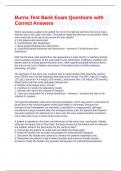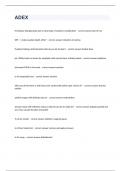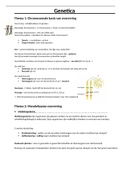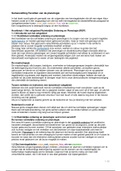Tentamen (uitwerkingen)
Burns Test Bank Exam Questions with Correct Answers
- Vak
- Instelling
When assessing a patient who spilled hot oil on the right leg and foot, the nurse notes that the skin is dry, pale, hard skin. The patient states that the burn is not painful. What term would the nurse use to document the burn depth? a. First-degree skin destruction b. Full-thickness skin destruc...
[Meer zien]









